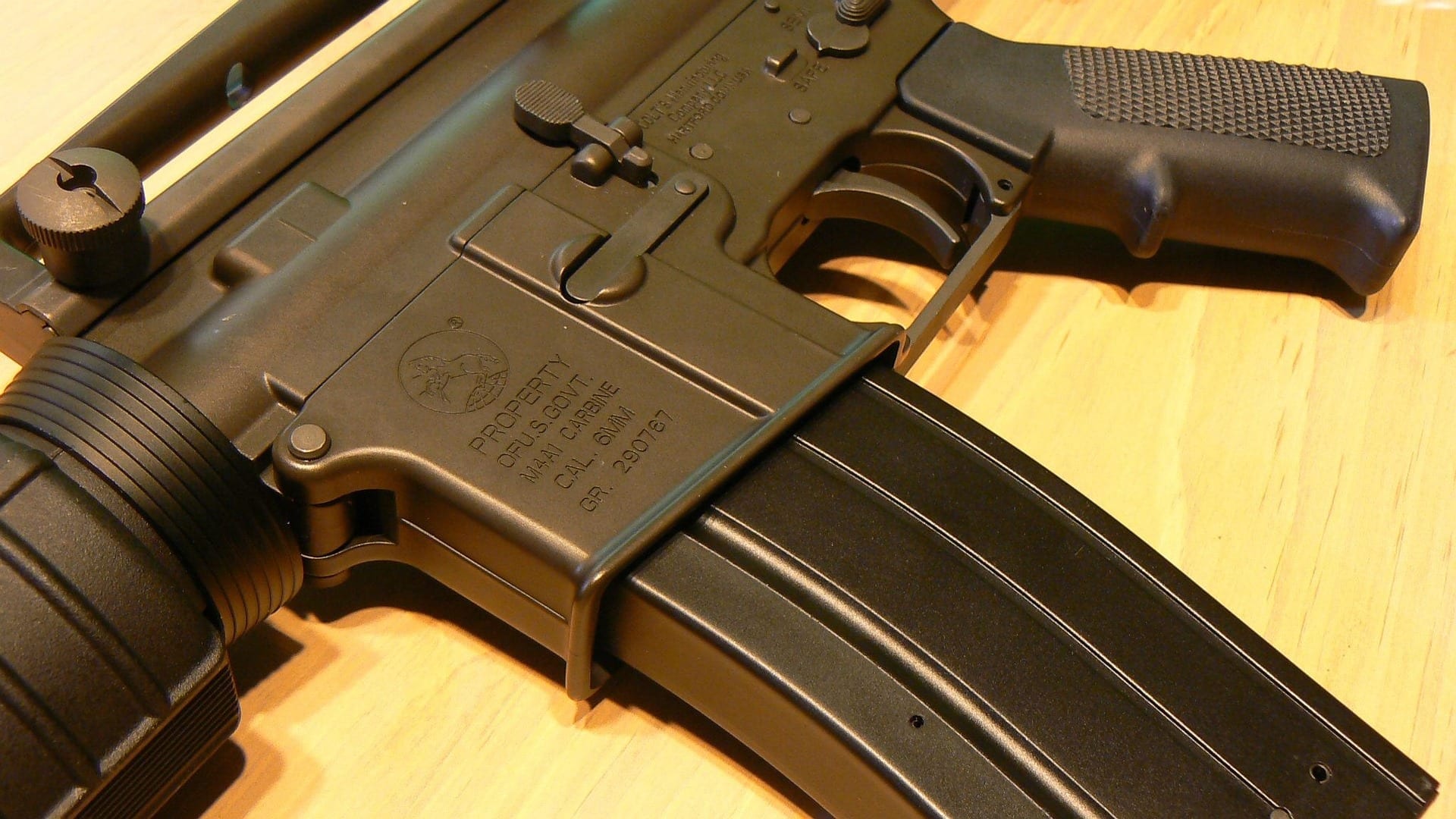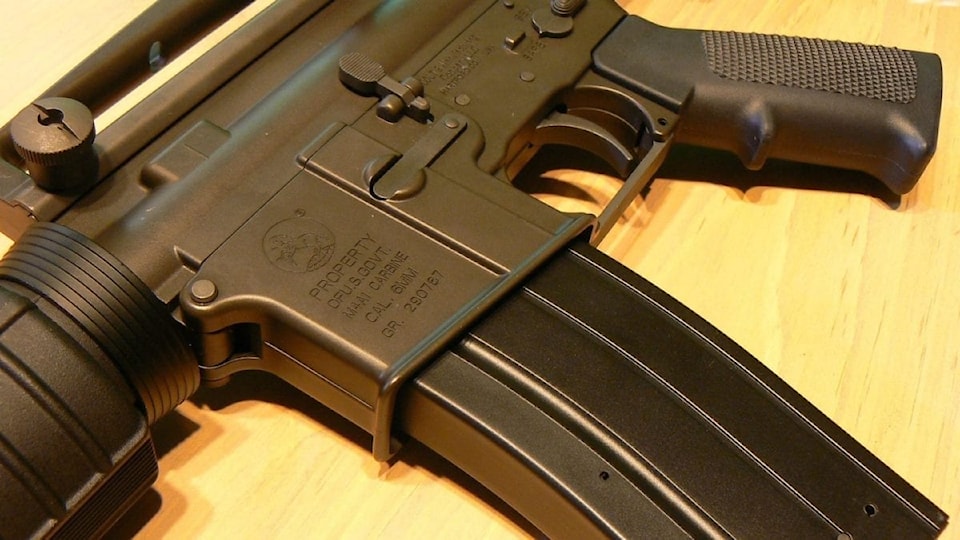A local gun owner is up in arms over a recent proposal from the federal government to ban "military-style assault rifles," saying the pledge unfairly takes aims at law abiding citizens and northern hunters, instead of targeting the real sources of gun violence in Canada.
Prime Minister Justin Trudeau made the promise during a campaign stop in Toronto on Sept. 20. If re-elected, he said, the Liberals would establish a buyback program for legally purchased guns falling under the new ban. Municipalities would be given the power to further restrict, or ban, handguns.
The proposal was touted as a means of curbing gun violence across the country while, at the same time, respecting the rights of hunters and farmers – Trudeau said military-style guns, not needed to “take down a deer,” have no place in Canada for civilian use.
According to background materials from the Liberal government obtained by CBC News, the ban would include "assault-style rifles and semi-automatic rifles like the AR-15 that look like assault rifles and can be converted to be fully automatic."
Fully automatic weapons are already banned in Canada. Firearms in Canada are placed in three categories: non-restricted; prohibited – meaning you can’t possess them at all – and restricted. AR-15s, a semi-automatic rifle that has been used in numerous mass shootings in the United States, are already restricted in Canada.
Background checks and safety courses are required for licensed holders of restricted firearms.
For Fraser Brown, a Yellowknife firearms owner and hunter, the Liberal government’s use of the term “assault,” makes no sense.

A local gun owner and hunter says the Liberal government's plan to ban "assault-style" rifles panders to the misinformed while missing the mark on the source of real gun violence in Canada.
“It’s pandering to the misinformed,” said Brown in a recent interview. “It’s a made up term that has no legal definition.”
When people hear the word “assault rifle,” Brown said they usually imagine the AR-15 (which stands for the make of the gun, ArmaLite). It’s part plastic and it “looks scary,” said Brown, but the “demonized” rifle is really no different than any other rifle — it fires once with each pull of the trigger, and in Canada, its magazine size is limited to five rounds.
Going after the AR-15 – a rifle that’s already illegal to hunt with and limited only to gun range use – misses the mark on curbing gun violence, said Brown.
While he understands the proposed ban on handguns in Canada after the federal government said that it would seek the views of citizens on that question, he said the proposed assault weapons ban would harm “people who are are literally the most law abiding people in the country.”
Since 2013, which marked the end of a four-year decline in gun violence, firearm-related violent crime has spiked by 42 per cent, according to Statistics Canada. Between 2013 and 2017, increases were recorded in 16 census metropolitan areas. The national upturn was largely the result of gun violence in Toronto.
Roughly sixty per cent of violent firearm-related offences since 2009 have involved handguns, Statistics Canada data shows. Illegal firearm smuggling into the country remains a problem, with the Canada Border Services Agency seizing 751 guns between 2017 and 2018.
While handguns are behind the bulk of gun violence in Canada by a long shot, semi-automatics rifles have been used to perpetrate high-profile shootings in the country, including the 1989 École Polytechnique massacre in Montreal.
Incumbent Liberal MP Michael McLeod told Yellowknifer the definition of what “assault” firearms will be banned is still being worked out.
“The intention is to look at assault rifles such as the AR-15,” said McLeod, adding “a lot of people are saying we should be looking at the rate of fire as a way of categorizing (what would be banned).”
Rate of fire refers to the frequency at which a particular type of gun can fire bullets. McLeod said he doesn’t see the proposed ban impacting hunters in the North.
“There’s not too many hunters that use semi-automatic guns to hunt," he said. "There’s hunters that use semi-automatic shotguns — it doesn’t apply to that. There’s hunters that use semi-automatic .22s — it doesn’t apply to that."
“So the definition hasn’t been defined yet but it’s not going to apply to rimfire, it will apply to centerfire guns …,” he added.
Centerfire firearms are more powerful than rimfire guns.
"We’re not sure on the other type of rifles that are going to be considered," said McLeod.
The definitions will be hammered out over a two-year consultation process if he's re-elected, he said.
But Fraser Brown said if the government is going to focus on rate of fire, then they have to be going after semi-automatic weapons at large, which are “used by hunters everywhere.”
Fraser said he knows many Indigenous sustenance hunters who use semi-automatic guns like the SKS, an affordable firearm that’s used to “harvest pretty much anything.”
What are other federal candidates saying?
Green Party candidate Paul Falvo stated he would “vote against any Liberal proposal that impedes lawful Northern hunters.”
“As your Northwest Territories MP I will be listening to constituents and I will advocate for responsible gun ownership that facilitates sustenance and traditional hunting,” added Falvo.
Luke Quinlan, NWT candidate for the People’s Party of Canada, called the Liberal proposal a “distraction.”
“This is part of the active, ongoing harassment of the legal firearm community whether you’re a sports shooter, a collector or a hunter,” he said.
Yanik D'Aigle, the Conservative candidate for the Northwest Territories, did not respond to a Yellowknifer’s request for comment, nor did NDP candidate Mary Beckett.
